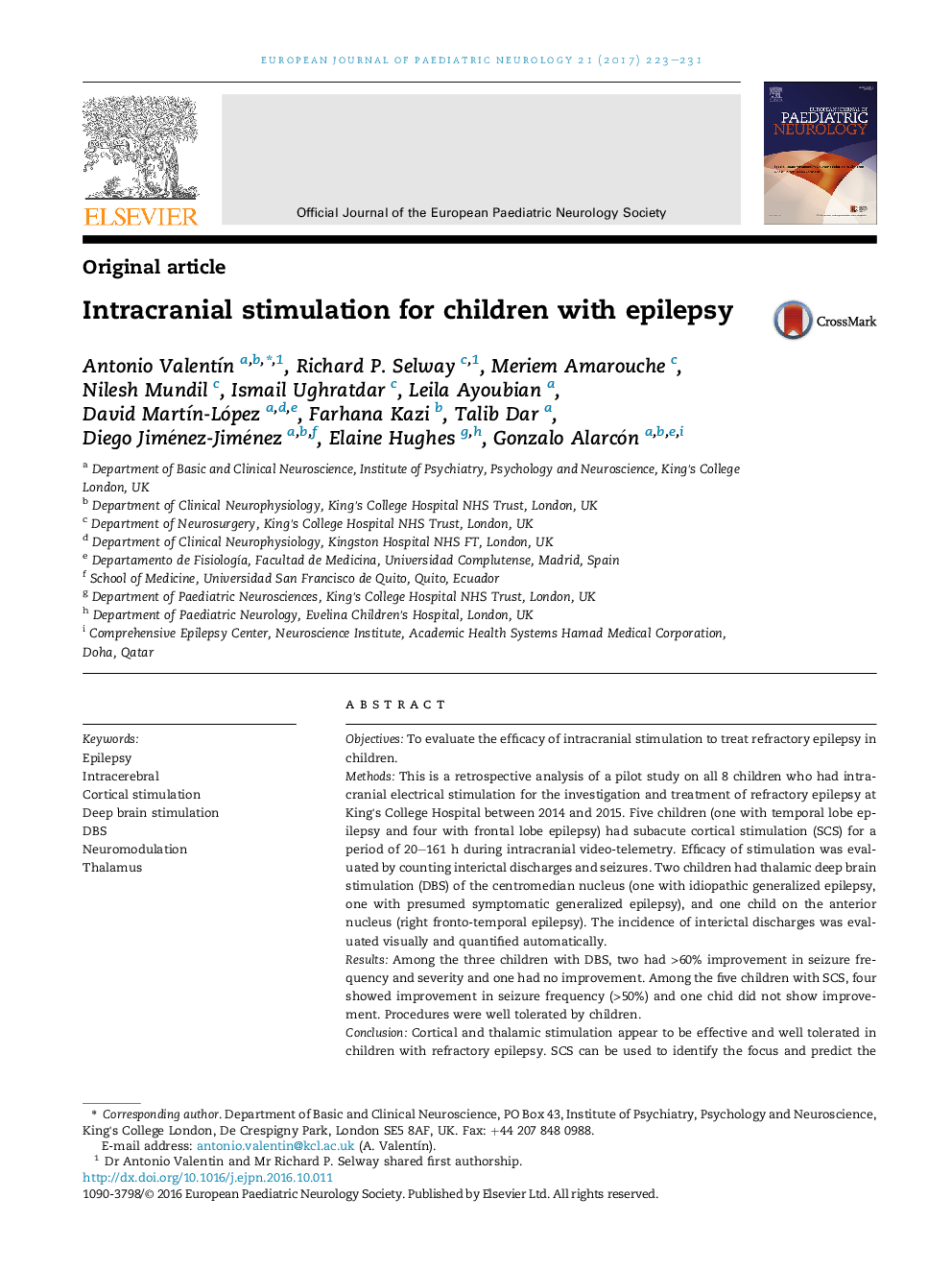| Article ID | Journal | Published Year | Pages | File Type |
|---|---|---|---|---|
| 5628934 | European Journal of Paediatric Neurology | 2017 | 9 Pages |
â¢Cortical and thalamic stimulation appear to be effective and well tolerated in children with refractory epilepsy.â¢SCS can be used to identify the focus and predict the effects of respective surgery.â¢Further larger studies are necessary.
ObjectivesTo evaluate the efficacy of intracranial stimulation to treat refractory epilepsy in children.MethodsThis is a retrospective analysis of a pilot study on all 8 children who had intracranial electrical stimulation for the investigation and treatment of refractory epilepsy at King's College Hospital between 2014 and 2015. Five children (one with temporal lobe epilepsy and four with frontal lobe epilepsy) had subacute cortical stimulation (SCS) for a period of 20-161Â h during intracranial video-telemetry. Efficacy of stimulation was evaluated by counting interictal discharges and seizures. Two children had thalamic deep brain stimulation (DBS) of the centromedian nucleus (one with idiopathic generalized epilepsy, one with presumed symptomatic generalized epilepsy), and one child on the anterior nucleus (right fronto-temporal epilepsy). The incidence of interictal discharges was evaluated visually and quantified automatically.ResultsAmong the three children with DBS, two had >60% improvement in seizure frequency and severity and one had no improvement. Among the five children with SCS, four showed improvement in seizure frequency (>50%) and one chid did not show improvement. Procedures were well tolerated by children.ConclusionCortical and thalamic stimulation appear to be effective and well tolerated in children with refractory epilepsy. SCS can be used to identify the focus and predict the effects of resective surgery or chronic cortical stimulation. Further larger studies are necessary.
